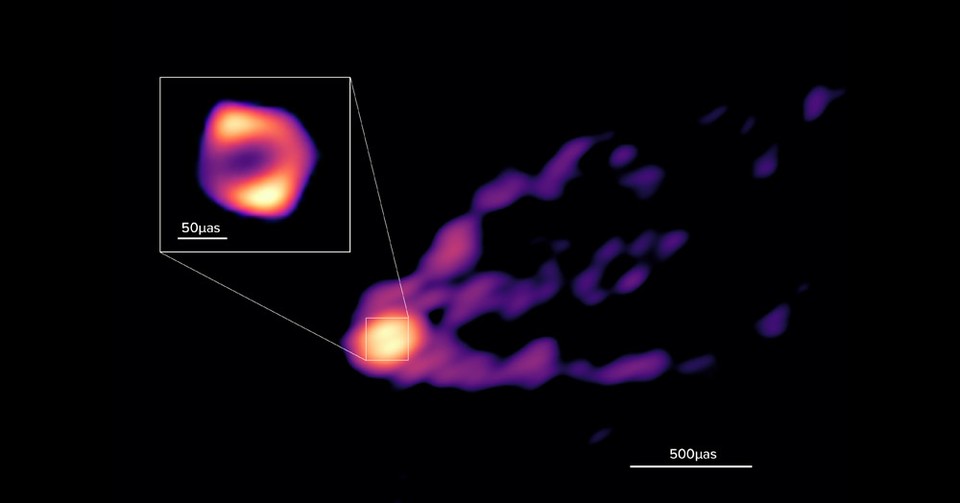You have long been using AI in space exploration: New pictures of M87 (Image source: Pixabay).
A novelty in the world of astronomy: Scientists have now observed for the first time how a bundled jet of material is produced by a black hole. Thus, for the first time, images exist that depict the immediate vicinity of a black hole along with its ejected matter. The research results were published in the renowned journal Nature.
The image shows focused jets of energy escaping the black hole of galaxy M87.
How were the recordings made?
The recordings were made with the help of several radio telescopes worldwide. The resulting data was then linked together. The procedure is called: Very Long Baseline Interferometry (VLBI). In addition, AI was used for the first time in such a process.
The observation took place in April 2018 – only now, five years later, the research results could be published. A total of 117 researchers from 64 institutes worldwide were involved.
What can be seen on the picture?
The photo shows the galaxy Messier 87 (M87 for short). This is 55 million light years away from our earth. What represents a gigantic distance by earthly standards is more of a stone’s throw from an astronomical point of view. Because of the short distance, M87 is so well suited as a research object.
At its center, galaxy M87 has a black hole 6.5 billion times the mass of our sun. For comparison: our sun weighs 332,946 times as much as our earth. Our planet, in turn, weighs 5,972 trillion tons.
This process can be seen in the picture
What can be seen in the scientists’ photo is best explained in its logical sequence:
- First step: Matter falls into a black hole
- Second step: This fall into the black hole activates matter
- Third step: Matter forms a hot, spinning disk around the black hole. The scientists speak of one
accretion disc
. - Fourth step: This accretion disk is now spinning into the black hole’s gravitational maw
- Fifth step: Part of the matter is deflected during this process – and bundled into matter rays. These rays of matter become
Jets
called. - Sixth step (and snapshot): This is what is shown in the picture: the jets emit a focused beam of energy; this one sometimes shines brighter, all the whole galaxy beyond. Such jets can accelerate extremely, sometimes even approaching the speed of light.
By the way: If you want to hear what black holes sound like, listen to the researchers at the Massachusetts Institute of Technology.
What’s happening now?
Eduardo Ros knows how things could continue after the publication of the amazing recordings in the renowned journal Nature. The scientific coordinator of the Max Planck Institute for Radio Astronomy is quoted in Der Standard:
“We plan to observe the region around the black hole at the center of M87 at different radio wavelengths to further study the jet’s emission.”
Are you stunned by the latest footage from space, or does your brain turn to guacamole when you hear about cosmic happenings? Do you have any hope that even more amazing images will soon be delivered with the help of AI? Feel free to exchange ideas in the comments.



 What’s happening with AI? Researcher explains why you can look forward to more creative NPCs, competition for ChatGPT and hot dog tomatoes
What’s happening with AI? Researcher explains why you can look forward to more creative NPCs, competition for ChatGPT and hot dog tomatoes Cowboy launches new on-demand service: That’s what’s inside
Cowboy launches new on-demand service: That’s what’s inside The new 4K Fire TV stick is now brutally reduced and transforms your old television into a smart TV
The new 4K Fire TV stick is now brutally reduced and transforms your old television into a smart TV The best mouse I’ve ever had, convinces me for gaming, work and home office and is different than all its predecessors!
The best mouse I’ve ever had, convinces me for gaming, work and home office and is different than all its predecessors! The first smart glasses suitable for everyday use that you can buy
The first smart glasses suitable for everyday use that you can buy